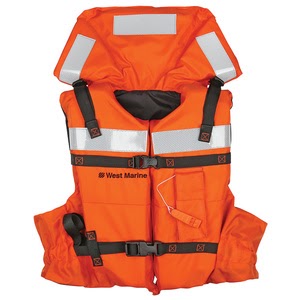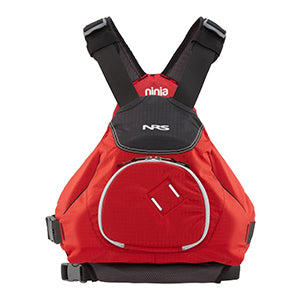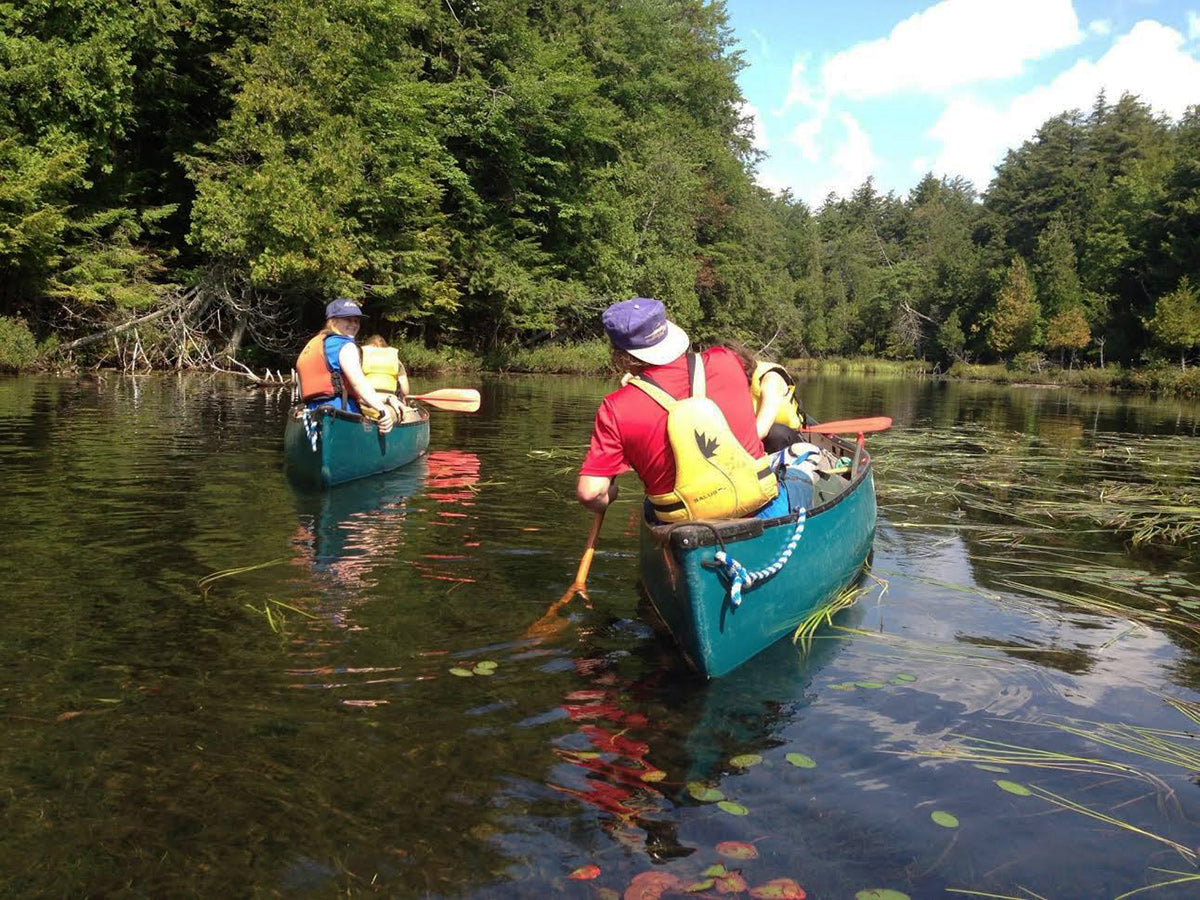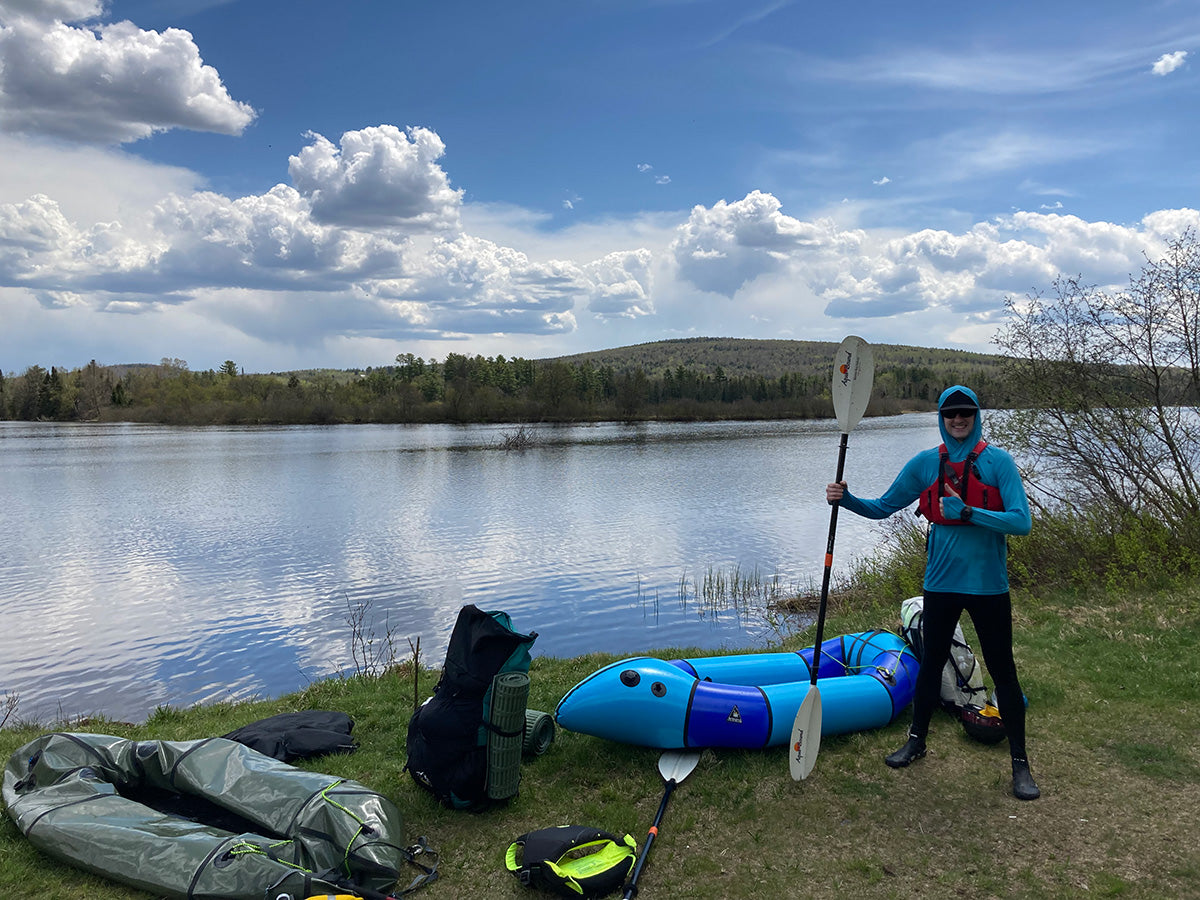
First off: WOO! Paddling is awesome. It will take you places not accessible by foot or vehicle, it's great exercise, and there is no better way to be around water.
The most important piece of gear for canoeing, kayaking, or SUP is a Personal Flotation Device (PFD). Ensuring you have the right one for the right type of activity is important. A properly fitted PFD can make or break your day on the water - an improperly fitting PFD can be bulky, uncomfortable, hot, and most importantly, might NOT keep you afloat.
PFDs are designed for paddling and come in a variety of shapes, features, colors, and price ranges. The most important thing about picking up a new PFD is simple: Make sure you wear it.
PFD Classifications
The US Coast Guard (USCG) classifies their PFDs in categories I, II, III, IV, and V. Most paddlers prefer a jacket in the III or V category based on their design — they're the most comfortable for paddling while still providing a safe level of floatation.
To better understand the classifications and get a good handle on what might work best for you:

Type I
These are most common in commercial vessels or children's PFDs. These are the most buoyant with the ability to keep an unconscious wearer on their back with their head and neck above water. These are best for rough water with remote access and a slower chance of rescue.

TYPE II
These are designed for calm water and for locations where rescue time will be shorter. The designs are very basic and can be worn for paddling, but they may be bulkier and less comfortable. These come in options to turn the wearer on their back while in the water and are inherently buoyant and inflatable.

TYPE III
Like Type II, Type III PFDs are commonly worn by paddlers in locations where rescue time will be shorter. These designs are more comfortable and will have the wearer float on their back to tilt their own head back and out of the water.

TYPE IV
These are not wearable PFDs. These are most commonly used to be thrown to a person wearing a PFD to assist in buoyancy. Float rings used by lifeguards and floating seat cushions fall in the Type IV category. These are often not required to be in a canoe or SUP.

TYPE V
These PFDs are classified as special use by USCG and must be worn at all times. A lot of paddlers pick these PFDs based on their comfort and lack of bulk. These designs are the most comfortable and uses are varied to waterskiing, canoeing, whitewater, and SUP. Type V PFDs come in both inflatable or hybrid (inherently buoyant and inflatable) designs.
Standard PFDs

These are the tried and true vest-style PFDs. Most recreational paddlers own or have used one of these. They’re often made of stiff and compact foam to maximize buoyancy and worn by zipping them up and tightening them appropriately to fit your body.
Why a Standard PFD may be for you:
- Versatility: If you’re a jack of all trades and enjoy kayaking, fishing, and waterskiing, this would be an awesome choice.
- Simplicity: Put it on, zip it up, get it snug, and hit the water. No-fuss buoyancy at its finest.
- Longevity: These types of vests are low-maintenance. As long as you keep them clean and dry them after use, it's basically as easy as caring for a pet rock.
Why it may not be for you:
- Bulk: Since these are designed for fit-and-go, sometimes they can be restrictive. Plain and simple, these vests don't offer the greatest range of motion.
- Temperature: Standard PFDs tend to be warm. In the summer months, being on the water is about cooling down. If you plan on being out for more than a few hours, wearing one of these PFDs is like wearing 4 fleeces strapped to your torso.
Inflatable PFDs

For SUPing, canoeing, and kayaking, these are the new kids on the water. Inflatable PFDs come as a waist belt or a vest and have a small CO2 canister inside them. There are manual versions that need to have a cord pulled for inflation or auto-inflating versions that become buoyant when submerged in water.
Why an inflatable PFD may be for you:
- Comfort: These typically offer the most range of motion — it feels like you are wearing nothing at all. (Well, apart from a bathing suit. Please tell me you're wearing a bathing suit).
- Cool factor: No, it isn't a fashion show. Inflatable PFD’s allow for temperature coolness. Less material on the body = less heat. Comfortable on hot and humid days!
Why an inflatable PFD may not be for you:
- Not naturally buoyant: If you're using a manual model, you'll have to inflate it with the pull cord. The big red flag for these types of PFDs is that if you are unconscious or injured in the water and can’t pull the cord, you're at risk to not stay afloat.
- Need periodic checkups: Inflatable PFDs typically have more pieces, which means more failure points. You should be checking the threads on the canisters regularly and switching them out immediately after deployment. They also need to be consistently checked for proper inflation.
- Less-versatile use: If you're doing any sort of higher impact water sport, these would NOT be a good option. Whitewater kayaking/canoeing or water skiing can prevent these from working, and do not provide the necessary protection for those types of activities.
Minimalist PFDs:

Minimalist (or "low-profile") PFDs are typically more sought after for paddlers out on the water for longer periods of time. They are designed to be worn for hours on end and are the sports cars of the PFD world.
Why a minimalist PFD may be for you:
- Comfort. These are specifically designed with the paddler-only approach. Minimalist PFDs have a big range of motion, they’re smaller, and more comfortable for longer trips or days on the water.
- All or nothing. There are a lot of versions. If you need big pockets for snacks or lures, you can find that. If you need one with basically nothing at all except for floatation, you can find that too.
- Customized fit. We all come in different shapes and sizes. A PFD that fits your friend really well won't be comfortable on you. There are unlimited options for different heights, weights, abilities, shapes, and sizes. Like Cinderella and a glass slipper, you'll find your perfect fit!
Why a minimalist PFD may not be for you:
- $$$. These minimalist style PFDs are hyper-specific in some cases, which costs more money. There are design teams who spend a ton of time making these the most comfortable, user-friendly, and buoyant, and more labor = more money. If you love paddling, or you know you really want to get into it, it is money well spent, a thousand times over.
Sizing a PFD
Making sure that your PFD is well-fitted is important — the end goal here is that you're always wearing it, after all — and a well-fitted PFD will provide much more comfort, range of motion, and safety than one that's not. PFDs are generally sized based on chest circumference, so head to a shop that'll have some measuring tape handy or break out your own so you can follow your PFD manufacturer's sizing guidelines and get the size that's right for you.
When you're strapping yourself into your PFD for the first time, start at that bottom and work your way up: tightening the straps around your chest first will prevent the PFD from riding up, then tightening your shoulder straps will keep it snug against your upper body.
Whether you’re buying for that expedition river trip or just for the few hours during sunset after work, there is a PFD suited for every adventure. The options are plentiful! Safety out on the water will remain number one, always. Just having one in/on the boat/SUP is not enough. Get the PFD that suits your needs and fits you the best. Chances are you'll find one so comfy you'll forget you even have it on!
Happy paddling.
